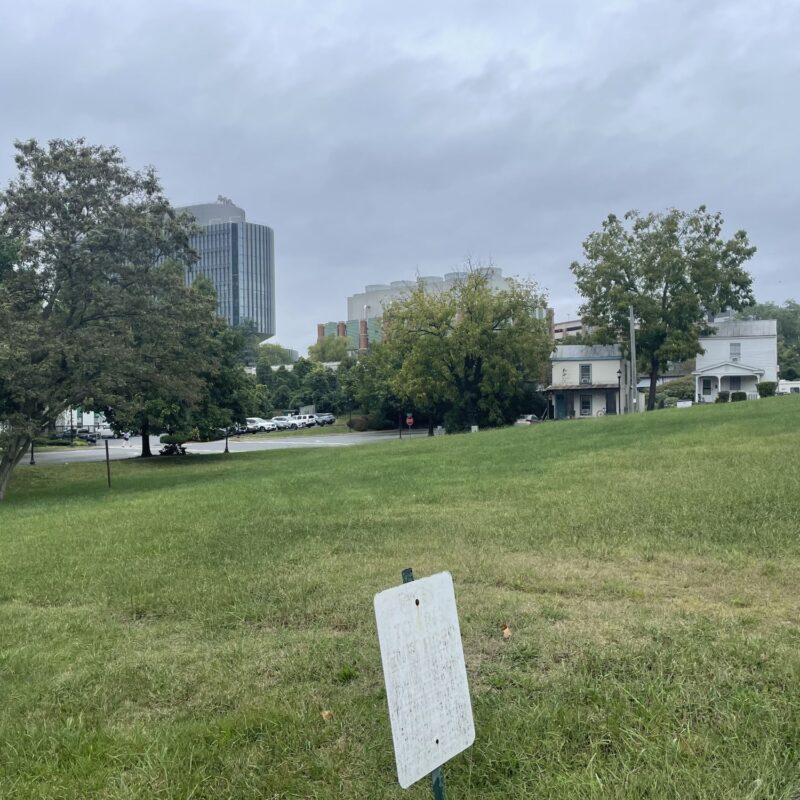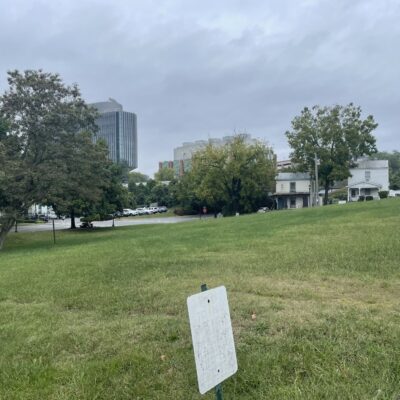Steve Kelly seems to be at a crucial moment in his development at a painter. I say that not out of familiarity with his previous work—I haven’t seen it—but because of what I saw at the Bridge, where he has a solo show. (His brother, Greg Kelly, is a Bridge co-founder.) The crucial moment is the one where an artist has mastered his own idiosyncratic vocabulary, but is still inventing new approaches every time he confronts a canvas. In other words, he’s out of the gate, but not in a rut.
 The nature of man: Steve Kelly’s subjects risk life and limb in his exhibit at The Bridge. |
Here are the common threads linking these paintings: graffiti, trees, human hands and bodies, animals as quasi-mythological figures, and a stylized technique of concentric broken multicolored lines, suggesting everything from trees’ growth rings to car exhaust. Within that coherent visual language, Kelly’s strategies are many. Some pieces are photographic in their composition: In “Natural Mischief,” a train car passes a tree, and graffiti leaps off its side, into the air, and inextricably entwines with the tree’s branches. Though it’s a fantastical scene, it’s realistically rendered, a snapshot gone crazy.
Other pieces have a strong graphic stamp, like medieval icons; they’re more like paintings than photos. The show’s flagship is a pair of large paintings called “Peril, the Boy” and “Peril, the Girl.” Two children emerge, eyes closed, from tree stumps. The severed trunks float, or are still falling, just above their heads. The suggestion is both of Russian dolls (the children, with their serene faces and luminous skin, are treasures worth cutting trees for) and of Pandora’s box. After all, most of their bodies are still hidden, and symbolic elements—a shark’s fin, a lurking deer—are ominous.
What’s wonderful is how, within each painting and among the pieces, all these suggestions and symbols and omens keep moving around like planets in a solar system, rather than clunking into predetermined slots of meaning. And how this dream world, where an ethereal Pegasus looms over a blue Volvo station wagon on a country road in “Pegasus v. the Family Drive,” is tied to an utterly contemporary reality: The cloud in which Pegasus flies is actually exhaust from the Volvo’s tailpipe, and Pegasus is a logo for Mobil gas.
For a painter concerned with the disconnect between humans and nature, and the consequences it creates, these resonances seem entirely appropriate.





